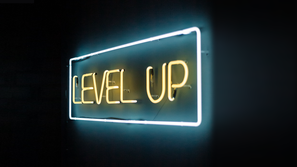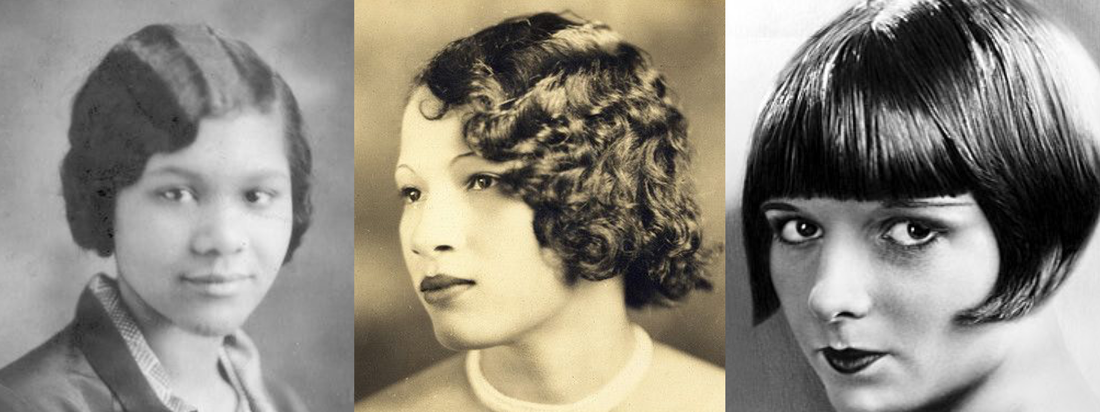Post-Pandemic Hair Trends
Post-Pandemic Hair Trends
Author: Jenna White | San Francisco Hairstylist
March 8th, 2021
March 8th, 2021
Hair trends shift with major world events as they alter the habits of those that are impacted. As a result, a haircut can become less functional, socially acceptable or trendy as people seek to express themselves in response to the shifting environment. Like most hairstylists, I've had some time on my hands while waiting for the shelter-in-place ban to lift. I've used it to study the last major pandemic similar to COVID-19, which was the 1918 flu, or H1N1. In this post, I'll share some of the hair trends that occurred at that time. Is hair history destined to repeat itself in the wake of COVID-19?
During the roaring 20's, younger generations had a "carefree attitude", a result of experiencing the highest global death count in history caused by World War I and the spread of H1N1. The war killed 40 million people between 1914 - 1918, followed by H1N1 infecting a staggering 500+ million people (~30% of the global population) from 1918 - 1919, and killing approximately 50 million (Source: The crucial difference between the 1918 flu and covid-19, The Washington Post). For comparison, as of May 10th, 2020, COVID-19 has infected 4.07 million people worldwide, and caused 281,287 deaths (that we know of).
The WWI and H1N1 global death toll influenced the "live for now" mindset, with people realizing any day could be their last (Source: Women’s 1920s Hairstyles: An Overview). The war also sent hundreds of thousands of men abroad, creating a surplus of domestic jobs. Many of these positions had to be offered to women, who until then had been limited to careers in services like housecleaning, cooking, child care and gardening. Exposure to these new opportunities stirred up awareness on what women were missing when it came to fulfillment through work, and brought to light the stereotypes society had set for them. A rebellion against these standards became embodied in short, cropped hair (Source: Women’s 1920s Hairstyles: An Overview). This stood in stark contrast to the prior decade's trends, which were influenced by long hair worn pinned up, also known as the Gibson Girl look (Women's Edwardian Hairstyles: An Overview). Men's hair shifted from styles with more "poof" (or volume) to a slicked back flatter look. All hair styles became simpler and shorter to stay in tune with the times.
During the roaring 20's, younger generations had a "carefree attitude", a result of experiencing the highest global death count in history caused by World War I and the spread of H1N1. The war killed 40 million people between 1914 - 1918, followed by H1N1 infecting a staggering 500+ million people (~30% of the global population) from 1918 - 1919, and killing approximately 50 million (Source: The crucial difference between the 1918 flu and covid-19, The Washington Post). For comparison, as of May 10th, 2020, COVID-19 has infected 4.07 million people worldwide, and caused 281,287 deaths (that we know of).
The WWI and H1N1 global death toll influenced the "live for now" mindset, with people realizing any day could be their last (Source: Women’s 1920s Hairstyles: An Overview). The war also sent hundreds of thousands of men abroad, creating a surplus of domestic jobs. Many of these positions had to be offered to women, who until then had been limited to careers in services like housecleaning, cooking, child care and gardening. Exposure to these new opportunities stirred up awareness on what women were missing when it came to fulfillment through work, and brought to light the stereotypes society had set for them. A rebellion against these standards became embodied in short, cropped hair (Source: Women’s 1920s Hairstyles: An Overview). This stood in stark contrast to the prior decade's trends, which were influenced by long hair worn pinned up, also known as the Gibson Girl look (Women's Edwardian Hairstyles: An Overview). Men's hair shifted from styles with more "poof" (or volume) to a slicked back flatter look. All hair styles became simpler and shorter to stay in tune with the times.
|
Edwardian hair influenced by the Gibson Girl look in the 1910's
Source: Women's Edwardian Hairstyles: An Overview |
Cropped Bob's in the 1920's
Sources: Women’s 1920s Hairstyles: An Overview and Vintage Dancer: 1920s Hairstyles History- Long Hair to Bobbed Hair |
|
Men's Haircuts 1910's
Sources: The Black Inventor Online Museum, Siloam Springs Museum: Rapps' Barber Shop and Wikimedia Commons |
Men's Haircuts 1920's
Sources: Men's Haircut Evolution, Jazma Hair Inc: Black Hair History, and DMARGE: The Most Iconic Men's Hairstyles in History: 1920 - 1969 |
I'm predicting another foray into short cropped bobs for longer hair and gelled back or shaved looks for shorter hair. Why? It's come to my attention that many of my clients have used our time apart to royally mess up their own hair. The best way to move forward now is to cut it all off or to hide behind some gel until it grows back in. Use the pictures below to inspire your post-COVID look.
I'd like to end with some food for thought. It looks like barbershops started conducting business outside to prevent the spread of H1N1 in 1919. Maybe that's something we should be thinking about for California's Phase 3 roll out??















